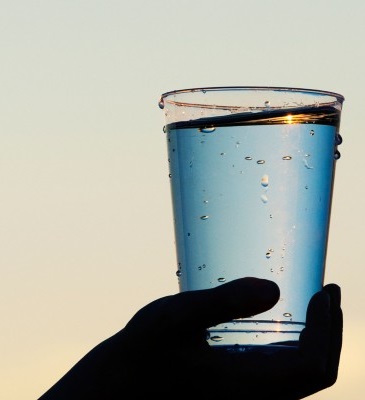Tasaduq Ismail Wani, Srinivas Rallapalli, Anupam Singhal, Dilan Robert, Jayantha Kodikara, Biplob Kumar Pramanik, Shashi Bhushan Arya
求助PDF
{"title":"基于复合模糊熵的埋地混凝土下水管道腐蚀不确定关键因素推导","authors":"Tasaduq Ismail Wani, Srinivas Rallapalli, Anupam Singhal, Dilan Robert, Jayantha Kodikara, Biplob Kumar Pramanik, Shashi Bhushan Arya","doi":"10.1038/s41545-025-00467-1","DOIUrl":null,"url":null,"abstract":"<p>Corrosion in buried concrete sewer pipelines remains a critical challenge for infrastructure sustainability, driven by the complex interplay of environmental, material, operational, pipe-related, and physical factors with inherent uncertainty and interdependency, aspects often overlooked previously. This study introduces a novel compounded fuzzy entropy-based approach to systematically prioritize critical corrosion-inducing factors, integrating environmental (H₂S, pH, humidity, temperature, O₂), material (cement content, alkalinity, w/c ratio, porosity, permeability), pipe-related (age, length, diameter, depth, slope), operational (flow velocity, water pressure, hydraulic energy loss, sewage residence time, sewer type), and physical (soil type, corrosivity, moisture, groundwater level, external load) factors. Results identify H₂S (0.2073), pH (0.2055), humidity (0.2031), pipe age (0.2039), length (0.2019), cement content (0.2026), alkalinity (0.2015), water pressure (0.2073), flow velocity (0.2043), soil type (0.2042), and soil corrosivity (0.2025) as the most influential contributors, enabling targeted corrosion mitigation strategies and enhancing infrastructure resilience.</p>","PeriodicalId":19375,"journal":{"name":"npj Clean Water","volume":"110 1","pages":""},"PeriodicalIF":11.4000,"publicationDate":"2025-05-06","publicationTypes":"Journal Article","fieldsOfStudy":null,"isOpenAccess":false,"openAccessPdf":"","citationCount":"0","resultStr":"{\"title\":\"Compounded fuzzy entropy-based derivation of uncertain critical factors causing corrosion in buried concrete sewer pipeline\",\"authors\":\"Tasaduq Ismail Wani, Srinivas Rallapalli, Anupam Singhal, Dilan Robert, Jayantha Kodikara, Biplob Kumar Pramanik, Shashi Bhushan Arya\",\"doi\":\"10.1038/s41545-025-00467-1\",\"DOIUrl\":null,\"url\":null,\"abstract\":\"<p>Corrosion in buried concrete sewer pipelines remains a critical challenge for infrastructure sustainability, driven by the complex interplay of environmental, material, operational, pipe-related, and physical factors with inherent uncertainty and interdependency, aspects often overlooked previously. This study introduces a novel compounded fuzzy entropy-based approach to systematically prioritize critical corrosion-inducing factors, integrating environmental (H₂S, pH, humidity, temperature, O₂), material (cement content, alkalinity, w/c ratio, porosity, permeability), pipe-related (age, length, diameter, depth, slope), operational (flow velocity, water pressure, hydraulic energy loss, sewage residence time, sewer type), and physical (soil type, corrosivity, moisture, groundwater level, external load) factors. Results identify H₂S (0.2073), pH (0.2055), humidity (0.2031), pipe age (0.2039), length (0.2019), cement content (0.2026), alkalinity (0.2015), water pressure (0.2073), flow velocity (0.2043), soil type (0.2042), and soil corrosivity (0.2025) as the most influential contributors, enabling targeted corrosion mitigation strategies and enhancing infrastructure resilience.</p>\",\"PeriodicalId\":19375,\"journal\":{\"name\":\"npj Clean Water\",\"volume\":\"110 1\",\"pages\":\"\"},\"PeriodicalIF\":11.4000,\"publicationDate\":\"2025-05-06\",\"publicationTypes\":\"Journal Article\",\"fieldsOfStudy\":null,\"isOpenAccess\":false,\"openAccessPdf\":\"\",\"citationCount\":\"0\",\"resultStr\":null,\"platform\":\"Semanticscholar\",\"paperid\":null,\"PeriodicalName\":\"npj Clean Water\",\"FirstCategoryId\":\"5\",\"ListUrlMain\":\"https://doi.org/10.1038/s41545-025-00467-1\",\"RegionNum\":1,\"RegionCategory\":\"工程技术\",\"ArticlePicture\":[],\"TitleCN\":null,\"AbstractTextCN\":null,\"PMCID\":null,\"EPubDate\":\"\",\"PubModel\":\"\",\"JCR\":\"Q1\",\"JCRName\":\"ENGINEERING, CHEMICAL\",\"Score\":null,\"Total\":0}","platform":"Semanticscholar","paperid":null,"PeriodicalName":"npj Clean Water","FirstCategoryId":"5","ListUrlMain":"https://doi.org/10.1038/s41545-025-00467-1","RegionNum":1,"RegionCategory":"工程技术","ArticlePicture":[],"TitleCN":null,"AbstractTextCN":null,"PMCID":null,"EPubDate":"","PubModel":"","JCR":"Q1","JCRName":"ENGINEERING, CHEMICAL","Score":null,"Total":0}
引用次数: 0
引用
批量引用


 求助内容:
求助内容: 应助结果提醒方式:
应助结果提醒方式:


